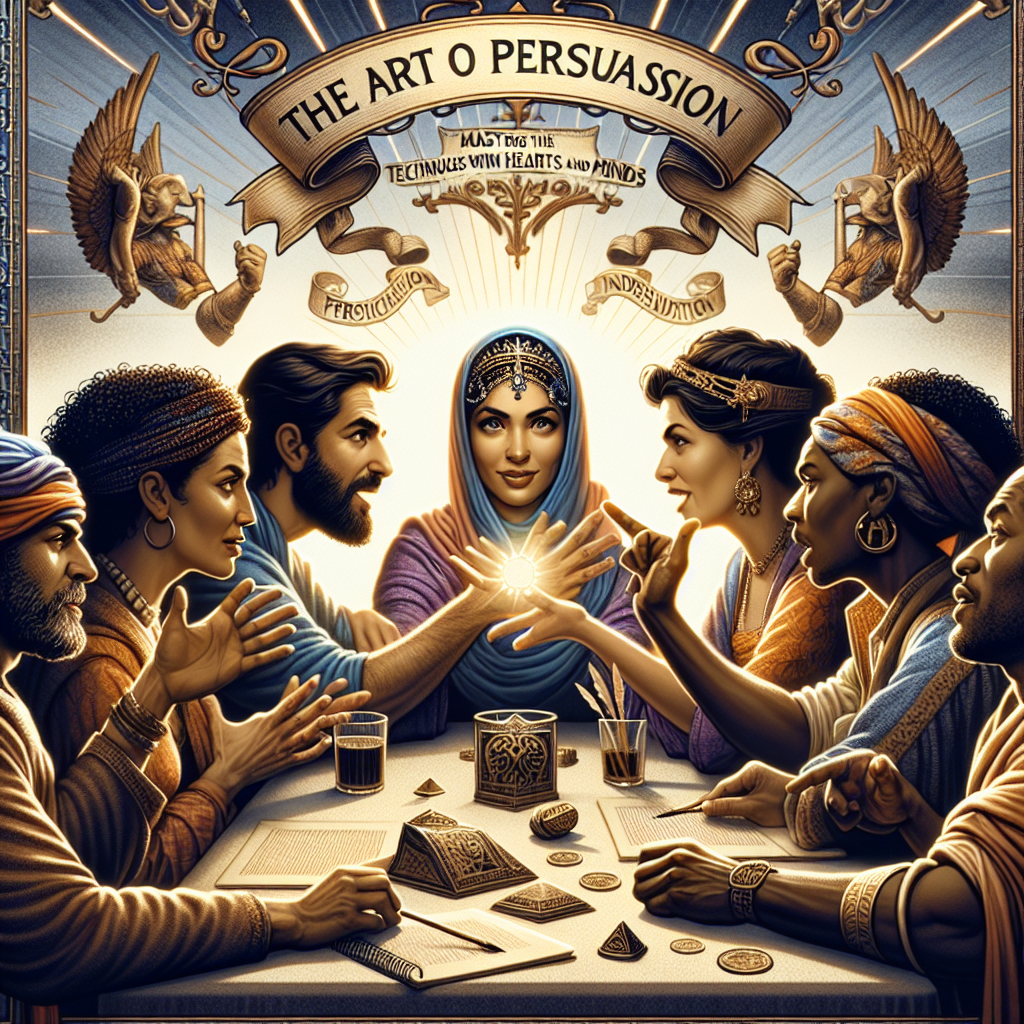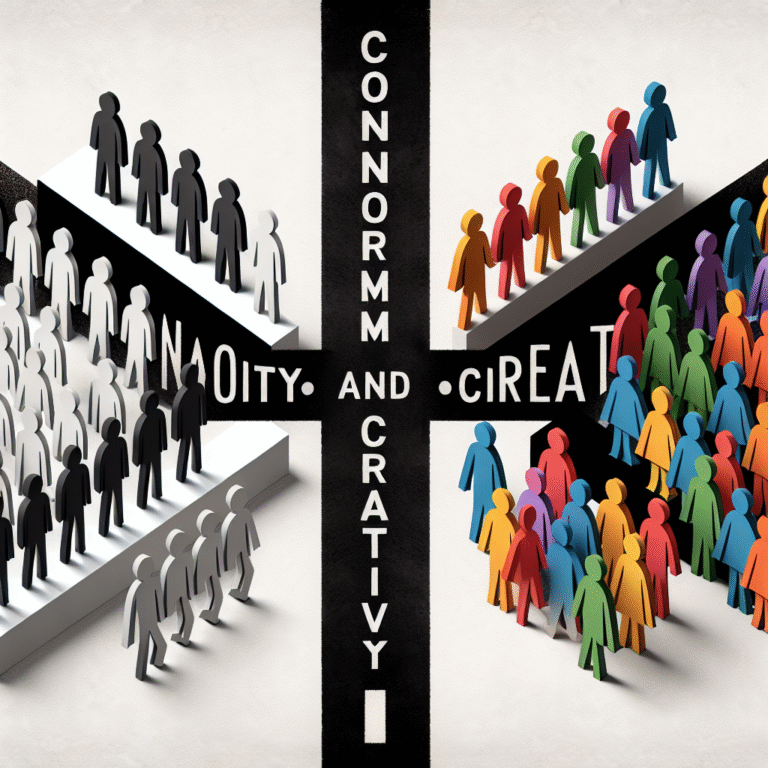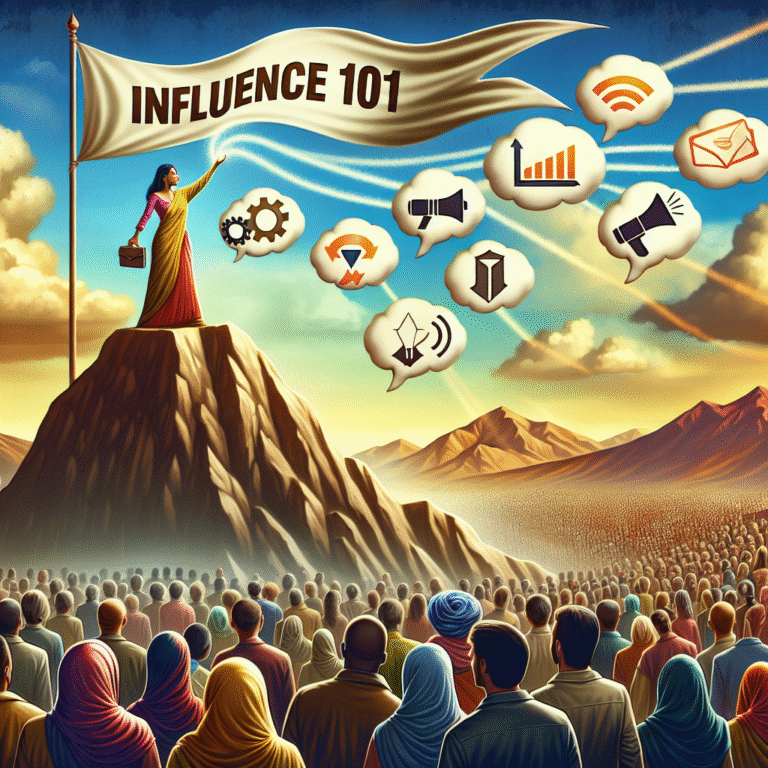
Introduction
In an age defined by information overload, the ability to persuade has never been more essential. Whether you’re trying to convince a potential client to sign a contract, motivate your team, or even get a loved one to see things from your perspective, mastering the art of persuasion can transform the way you connect, influence, and ultimately succeed. The Art of Persuasion: Mastering the Techniques That Win Hearts and Minds serves as a comprehensive guide to these vital skills.
The Importance of Persuasion in Everyday Life
Every day, we engage in various instances of persuasion, often without realizing it. From marketing strategies and political campaigns to interpersonal relationships, the techniques of persuasion drive outcomes. As you become more aware of the mechanics behind persuasion, you’ll find not only increased success in your endeavors but also deeper and more meaningful connections with those around you.
The Foundations of Persuasion
Understanding Human Psychology
To grasp The Art of Persuasion: Mastering the Techniques That Win Hearts and Minds, it’s crucial to understand the psychology behind it. The following principles lay the groundwork for effective persuasion:
Reciprocity: People generally feel compelled to return favors. Offering something of value—a compliment, assistance, or even insightful information—can generate goodwill and increase the likelihood of compliance.
Commitment and Consistency: Once individuals commit publicly to a position or idea, they are more likely to act in accordance with that commitment. This principle can be effectively employed in various situations, from negotiations to personal relationships.
Social Proof: People often look to others for cues on how to behave. Showcasing testimonials, reviews, or expert endorsements can enhance your credibility and sway opinions.
Authority: People tend to follow the lead of credible experts. Establishing your authority on a subject can significantly impact your persuasive power.
- Liking: People are more likely to be influenced by those they like. Building rapport is key in the initial stages of persuasion.
Crafting Your Message
The Art of Persuasion: Mastering the Techniques That Win Hearts and Minds also involves how you construct the message. Here are several strategies:
- Clarity: A clear and concise message is easier to understand and remember.
- Relatability: Use stories or anecdotes that your audience can relate to; it fosters connection.
- Emotion: Tapping into emotions makes your message more compelling.
Techniques for Mastering Persuasion
Storytelling: The Emotionally Charged Method
Storytelling is one of the most effective modalities within The Art of Persuasion: Mastering the Techniques That Win Hearts and Minds. Engaging narratives can create emotional connections and make your message resonate.
Case Study: Apple’s Marketing
Apple has excelled in storytelling through its marketing campaigns. The "Think Different" campaign conveyed a powerful message of innovation and creativity through stories of notable figures in history. This technique not only sold their products but also fostered a community around their brand.
Analysis: Apple’s use of storytelling demonstrates that integrating narratives creates emotional investment, which is pivotal for persuasion.
The Power of Questions
Strategic questioning can lead your audience toward a desired conclusion. This technique aligns with the principle of commitment and consistency.
Case Study: The Socratic Method
In educational discussions, employing the Socratic Method—asking a series of guided questions—leads students to arrive at conclusions organically. This method fosters critical thinking and enhances retention.
Analysis: Integrating questions into your persuasion strategy ensures your audience feels involved and invested in the discussion, making them more likely to align with your viewpoint.
Visual Aids: Enhancing Understanding and Recall
Visuals can significantly boost your persuasive efforts by making complex information digestible. Charts, graphs, and infographics—not only enhance understanding but also retention.
Table 1: Impact of Various Visual Aids
| Type of Visual Aid | Effectiveness (%) | Recall Rate (%) |
|---|---|---|
| Infographics | 70 | 80 |
| Charts | 60 | 65 |
| Images | 50 | 50 |
Leverage Exclusivity and Scarcity
Exclusivity creates urgency. Limited-time offers or exclusive membership can provoke immediate action.
Case Study: Limited Edition Products
Brands like Nike frequently release limited-edition sneakers. This creates anticipation, with customers eager to buy before they’re gone.
Analysis: By understanding how scarcity affects decision-making, you can enhance your persuasive capability. Highlight what’s unique and time-sensitive about your offer.
Building Trust and Credibility
Authenticity is Key
In The Art of Persuasion: Mastering the Techniques That Win Hearts and Minds, authenticity plays a crucial role. People can sense when someone is genuine versus when they’re merely trying to sell a pitch. Share personal stories, admit mistakes, and be transparent.
Consistency in Communication
Maintaining consistent messaging reinforces your credibility. Discrepancies can create doubt in your audience’s mind, undermining your persuasive efforts.
Navigating Objections and Resistance
Anticipating Pushback
A successful persuader must be adept at handling objections. Understanding common concerns allows you to address them proactively.
Techniques to Overcome Objections:
- Listen Actively: Show that you value the other person’s opinion by practicing active listening.
- Acknowledge Concerns: Validate their feelings before presenting a counterargument.
- Use Testimonials: Share stories from others who have had similar reservations but saw positive outcomes.
The Digital Age: Online Persuasion Techniques
In today’s digital landscape, traditional persuasion techniques often require adaptation. Here’s how you can tweak your approach:
- Utilize Social Media: Building a community and engaging with followers can foster trust and credibility.
- Content Marketing: Providing valuable content can persuade your audience by establishing you as an authority in your niche.
- Email Campaigns: Personalized messages can create a sense of exclusivity and foster emotional connection.
Conclusion
Mastering The Art of Persuasion: Mastering the Techniques That Win Hearts and Minds is an ongoing journey requiring self-awareness, empathy, and practice. By cultivating relationships, understanding psychology, and employing strategic communication techniques, anyone can become a more effective persuader.
Actionable Insights
- Practice Active Listening: Values the perspectives of others.
- Utilize Storytelling: Build narratives that connect with your audience.
- Be Authentic: Create genuine connections based on trust.
FAQs
1. What are the most effective persuasion techniques?
The best techniques include storytelling, leveraging social proof, and utilizing questions strategically.
2. How can I improve my persuasive skills?
Practice active listening, be clear in your messaging, and engage emotionally with your audience.
3. Is persuasion ethical?
Persuasion is ethical when used responsibly and with respect for the other person’s autonomy.
4. Can persuasion be learned, or is it innate?
While some may have a natural gift, anyone can learn and master persuasive techniques through practice and understanding.
5. How does body language affect persuasion?
Non-verbal cues significantly impact your message. Positive body language can reinforce your message and foster connection.
Mastering The Art of Persuasion: Mastering the Techniques That Win Hearts and Minds not only enhances your professional life but enriches your personal relationships, making for a more fulfilling existence. The journey to becoming a persuasive communicator starts here, in understanding the art behind the science.










